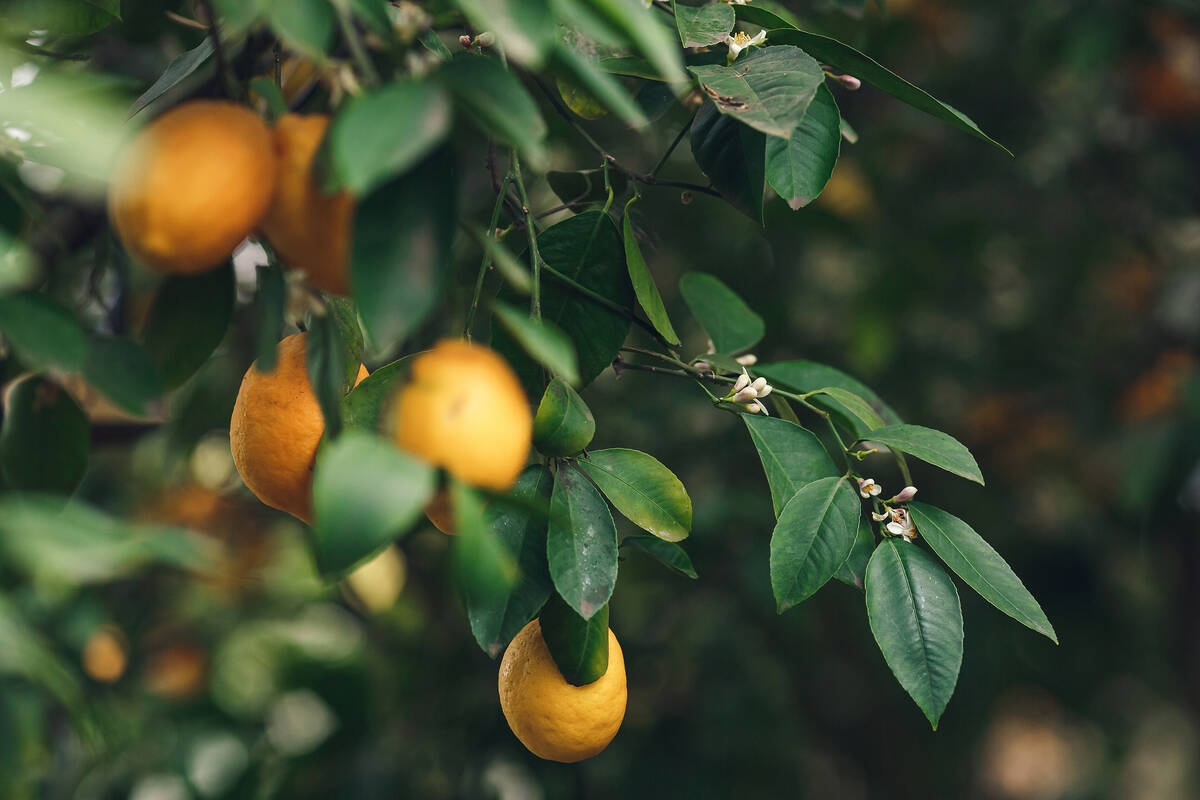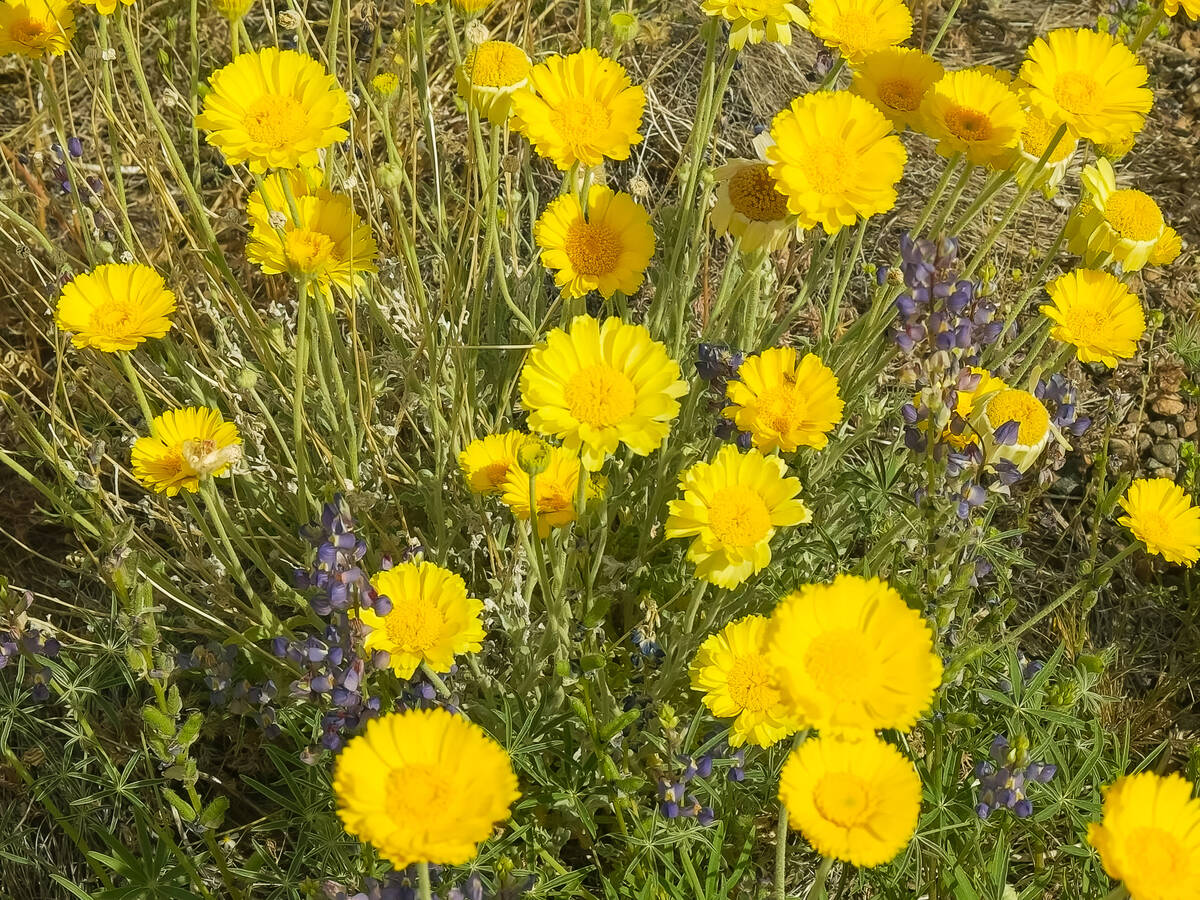Which types of fruit trees grow well in Las Vegas Valley?
Q: My wife and I moved to the Las Vegas area in late June from the Bay Area and are happy with our move. In the past, our yard has been filled with fruit trees, mostly stone fruit, berries and various bushes. The backyard in our Vegas home is a blank slate, which is one reason why we bought it.
It appears that a variety of fruit trees and berries can be grown here, and we are looking forward to getting started. Given the climate differences, I wonder if January through February planting dates are the same here in the desert?
Are there any fruit trees or types of berries you would suggest we do not plant here? We are thinking about apricot, peach, nectarine, cherry and apple, if we can find the right variety. I know citrus does well here, but I have never done well with trying to grow citrus.
A: I have been growing fruit trees in North Las Vegas and Las Vegas since 1996. Keep in mind that any fruit trees cost money in terms of their water use. If you are comfortable with that, then watching fruit trees grow and produce fruit and maintaining them can be rewarding.
Once you commit to growing fruit trees, you must visit them at least twice a week. If you’re not willing to make that commitment, then growing food is not for you. Newer varieties of fruit trees should start producing somewhere around two to three years. Older varieties of nut trees can take six years or longer.
Look at your neighborhood’s older fruit tree plantings. Repeat their locations, types (if you like that kind of fruit) and distances from the home. It’s important to be at least 5 feet from the home or any wall. The west and south sides of a home or wall are hot. It may not seem that way during the winter months, but it will be in the summer.
The distance apart dictates fruit tree height. If fruit trees are 10 feet apart, then their maximum height is 10 feet (you can prune lower than that). If fruit trees are 8 feet apart (the closest I recommend planting them) then their maximum height will be 8 feet. Anything closer than that becomes a hedge of fruit trees.
I am not a big fan of citrus for our location. Citrus is semitropical, which means most start flowering as soon as it gets warm and they flower early, usually late January or February. Our best locations for growing reliable citrus, year to year, are Riverside/Orange/western San Bernardino county areas in California and the Phoenix/Yuma areas in Arizona. These places are warmer than Las Vegas. I have had the most luck in our area with fruit trees that begin flowering in mid- to late February.
Our worst months for growing are most of January and February. Not so for planting. I have had the most success planting fruit trees as early as possible, from about the middle of January until March. For warm-season fruit trees, like citrus, I have had better luck when I delay planting as late as possible until the danger of frost has passed. There are some places in Las Vegas that shouldn’t grow citrus, for mostly weather-related reasons.
For a list of recommended fruit trees for our area, email me.
Q: A reader asked how to protect pomegranates from birds. I put organza bags — the large size — over the maturing fruit. I buy in bulk online and they work perfectly. The usual reason for bagging fruit is to grow them organically or without using pesticides.
A: There may be another reason for using bags over the fruit. These bags may protect from sun damage. There are three things that affect fruit’s marketability: size, scratches and blemishes, and sun damage. In the desert, sun damage can be a problem particularly to the skin or rind of persimmons and pomegranates. These bags may help in that regard.
Q: I have a dwarf lemon tree. I still have several lemons on the tree as of Dec. 10 which are still a little green. Given the much cooler temperatures, should I pick them and bring them inside or let them continue to ripen on the tree.
A: I would leave them on the tree and watch your weather app. Most lemons can handle temperatures about 4 or 5 degrees below freezing before the fruit gets damaged. The typical time for picking lemons is in January just before the tree flowers again — so that harvesting does not interfere with flowering.
Pure water freezes as soon as temperatures drop below 32 degrees. As the lemons become more yellow, fruit “sap” increases in sugar content. Like an antifreeze, this decreases the chance of freezing. I wouldn’t pick them unless there is a danger of a hard freeze (temperatures 4 or 5 degrees below freezing).
Q: Can I grow cherries in Las Vegas?
A: Flowering was not a problem when I grew 10 varieties of sweet cherries for 10 years. By the way, this included the variety called Bing. They flowered every year that I grew them in North Las Vegas. However, producing fruit from the flowers of sweet cherries is a problem. The magic number for fruit set seems to be above 20 percent relative humidity. I reasoned that it had more to do with the low humidity of the desert and its effects on pollination.
However, people with lawns surrounding these fruit trees had an abundance of sweet cherries every year. I think the presence of a swimming pool can have the same effect as a lawn.
Sour cherries are different. Sour cherries such as North Star and Montmorency seem to set a few fruit regardless of the humidity. Sour cherries are a better choice for the desert if you want a handful of fruit every year.
When growing sweet cherries, make sure the humidity around the plants is more than 20 percent, and see if that helps.
Q: I have been having difficulty getting my desert plants to germinate. I planted desert marigold and silverleaf sunray seeds, placed them in a peat pot and kept them moist, but I have had very poor success. Do desert plants need different conditions than nondesert plants in order to germinate?
A: Both desert marigold and silverleaf sunray are native to the Southwest’s deserts. The silverleaf sunray can live a long time, as it’s perennial. The desert marigold can be a perennial but is usually found as an annual or biennial. If it’s biennial or perennial it is usually short-lived. They both reseed themselves, but water is the key.
The desert marigold is best sown in the fall (around November), and the silverleaf sunray seed can be sown anytime. It appears that the desert marigold may need some “winter chilling” for the seed to germinate. Both of these plants will die if the soil is too wet, so it’s important not to water them too often. When you water them, water so that it comes out from the bottom of the container and let the soil dry between waterings. I would guess that three weeks between waterings should be long enough during the summer. It’s very important for the soil to dry between irrigations.
Both of these plants like soils that are gravelly. The silverleaf sunray may benefit from a thin layer of gypsum applied to the top of the soil. Overpreparing the soil or adding compost or other amendments can cause the seed to get the lost in this fluffy germinating bed. Seeds like firm seed beds, not fluffy and not hard.
After they begin to germinate and reach about 1 inch tall, lightly sprinkle the area with compost or a tomato and rose fertilizer (because of its phosphorus content).
Bob Morris is a horticulture expert and professor emeritus of UNLV. Visit his blog at xtremehorticulture.blogspot.com. Send questions to extremehort@aol.com.


















